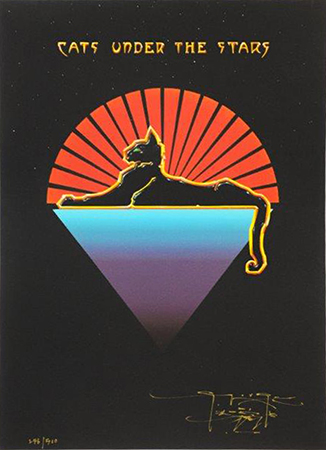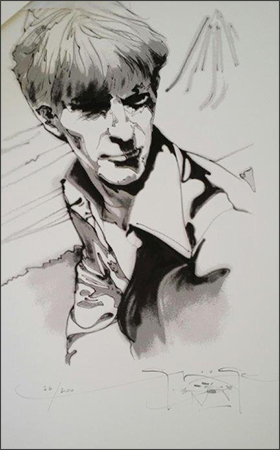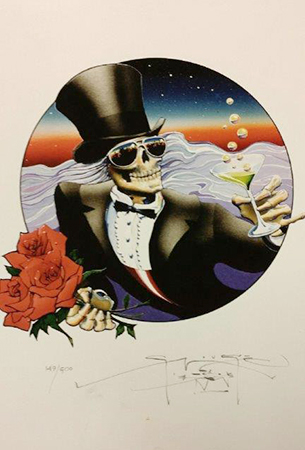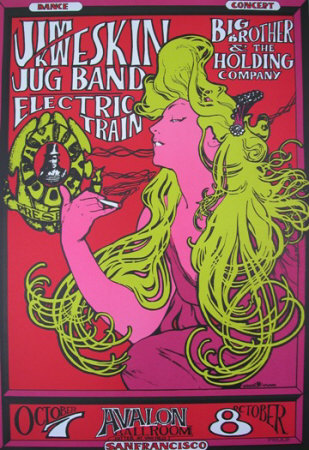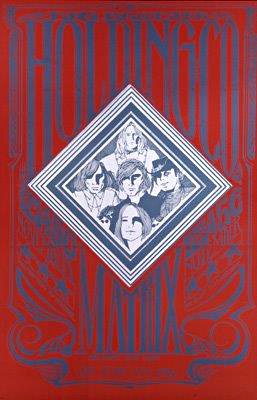Stanley Mouse
Stanley Mouse’s nouveau-tribal psychedelic graphic style virtually defined the art surrounding American rock music in the 1960s and 1970s. A seminal member of the counterculture scene that blossomed in the Haight-Ashbury district of San Francisco in the late ‘60s,
“This art was created using the methods and presses shown on the Lithography page”
Please Call or Email for special pricing! Toll Free: (844) 714-1275
Stanley Mouse Biography
Stanley Mouse’s nouveau-tribal psychedelic graphic style virtually defined the art surrounding American rock music in the 1960s and 1970s. A seminal member of the counterculture scene that blossomed in the Haight-Ashbury district of San Francisco in the late ‘60s, Mouse, along with his art partner Alton Kelley, created now-classic posters advertising dance concerts at the Avalon Ballroom and Bill Graham’s Fillmore Auditorium, including those of the Grateful Dead, Big Brother and the Holding Company, Quicksilver Messenger Service, Jefferson Airplane, and Jimi Hendrix.
“These famed posters captured the very sound of the music,” wrote Joel Selvin in the 1992 book Freehand: The Art of Stanley Mouse. “Perhaps not since Toulouse-Lautrec illustrated the café society of the late 19th century Paris has an artist’s style and vision been as integrated into the very fabric of his subject.” In fact, Mouse’s work was featured side-by-side with that of Toulouse-Lautrec in a traveling exhibition of the San Diego Museum of art titled “High Societies,” which explores the art that has thrived in some of history’s more decadent times and places. “The High Societies exhibit puts the psychedelic Haight-Ashbury posters in historical context,” Mouse says, “and gets past some of the stigma attached to them because of their association with drugs.”
The mind-expanding pursuits of that time went far beyond chemical experimentation, he points out. It was a time when young Americans began to explore and adopt wide-ranging aspects of world culture, from Native American to East Indian. And nowhere was that influence more visible than in the graphic designs of Mouse and his artistic colleagues, who echoed the free-form unpredictability of their friends’ musical “jam sessions” with their collaborative explorations.
“Every day Kelley,’ who died in 2008,’ and I would go through the stacks in the back of the San Francisco library and study art books like crazy, looking for imagery and ideas for posters,” Mouse says. It was there that they found an illustration from the Rubaiyat by the Islamic poet Omar Khayyam that inspired the Grateful Dead’s skeleton and roses logo. (Mouse is also behind many other rock icons and album covers, such as the Journey “scarab,” the Steve Miller Band “Pegasus,” and images for Eric Clapton, Led Zeppelin, and the Beatles.) A devotee of life drawing, Mouse was especially attracted to the exaggerated organic shapes of art Nouveau, which also influenced the fantastical typography that became characteristic of his posters.
Arriving on the scene as “a kid from Detroit in Bermuda shorts” who had first made a name for himself airbrushing “monster cars” on t-shirts at hot-rod shows, Mouse credits the transformative aura of the time and place with his own personal and artistic growth. What’s more, as a backstage regular in early days of rock’s legendary stars, he’s got some great stories: Like the time the bank Big Brother and the Holding Company, who often rehearsed in Mouse’s studio, auditioned a new singer names Janis Joplin. “The police came to our door and said someone had reported hearing a woman screaming,” Mouse muses. And the rest, like the Mouse images now hanging in venues like the Hermitage in Russia and the New York Museum of Modern Art, is history.
Mouse created paintings of the 2008 inductees to the Rock and Roll Hall of Fame, including Leonard Cohen, The Dave Clark Five, Gamble & Huff, Little Walter, Madonna, John Mellencamp, and The Ventures.





